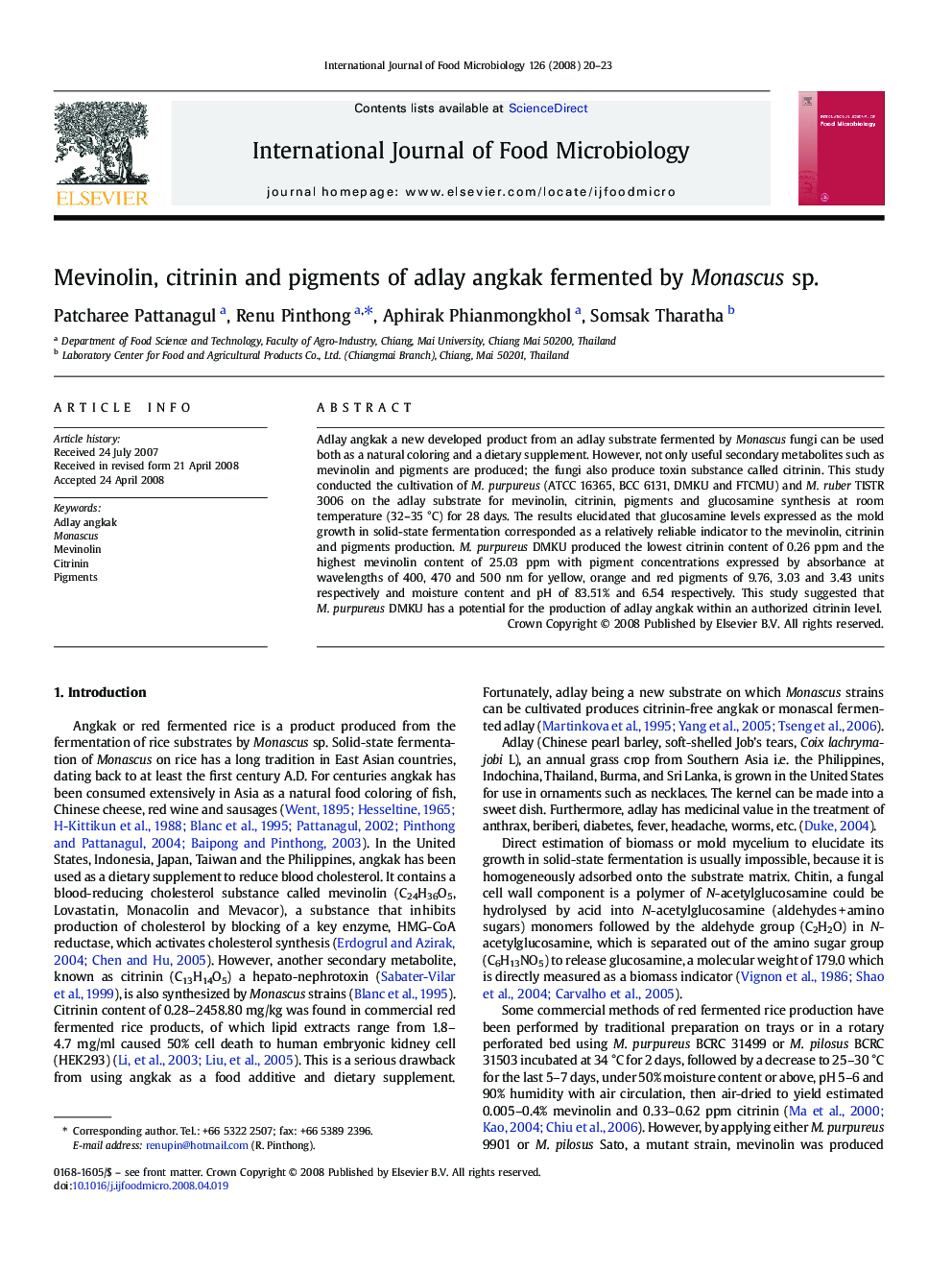| کد مقاله | کد نشریه | سال انتشار | مقاله انگلیسی | نسخه تمام متن |
|---|---|---|---|---|
| 4368990 | 1616721 | 2008 | 4 صفحه PDF | دانلود رایگان |

Adlay angkak a new developed product from an adlay substrate fermented by Monascus fungi can be used both as a natural coloring and a dietary supplement. However, not only useful secondary metabolites such as mevinolin and pigments are produced; the fungi also produce toxin substance called citrinin. This study conducted the cultivation of M. purpureus (ATCC 16365, BCC 6131, DMKU and FTCMU) and M. ruber TISTR 3006 on the adlay substrate for mevinolin, citrinin, pigments and glucosamine synthesis at room temperature (32–35 °C) for 28 days. The results elucidated that glucosamine levels expressed as the mold growth in solid-state fermentation corresponded as a relatively reliable indicator to the mevinolin, citrinin and pigments production. M. purpureus DMKU produced the lowest citrinin content of 0.26 ppm and the highest mevinolin content of 25.03 ppm with pigment concentrations expressed by absorbance at wavelengths of 400, 470 and 500 nm for yellow, orange and red pigments of 9.76, 3.03 and 3.43 units respectively and moisture content and pH of 83.51% and 6.54 respectively. This study suggested that M. purpureus DMKU has a potential for the production of adlay angkak within an authorized citrinin level.
Journal: International Journal of Food Microbiology - Volume 126, Issues 1–2, 15 August 2008, Pages 20–23